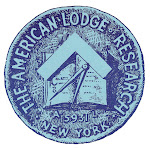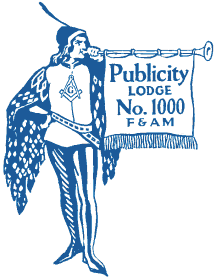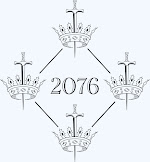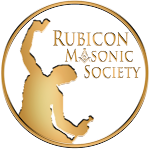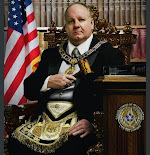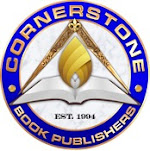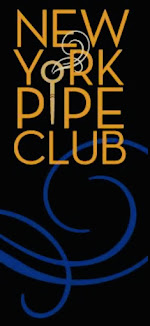 |
| Bro. Tom discusses John Paul Jones during the research lodge’s meeting yesterday. |
Great meeting yesterday for New Jersey Lodge of Masonic Research and Education 1786.
Getting into the building turned out to be a little tricky, but everything went smoothly from then. Attendance was terrific—not huge numbers, but several faces we haven’t seen in a while, and some in a really long while. Bro. Matt, erstwhile Secretary, who still keeps a hand in things by publishing our quarterly trestleboard, was there to the delight of those of us who’d been around long enough to know him. And Bro. Sal Corelli (they traveled together) was a sight for red eyes. Plus, Bro. Paul and Bro. Jay, who don’t get to our communications often enough.
We benefitted in profit and pleasure from three presentations.
Secretary Erich Huhn reviewed the Allen Roberts book Freemasonry in American History, which is the current selection of the book club jointly run by the research lodge and Jerusalem Lodge 26. (I admit to getting a chuckle out of their announcement of this title being the club’s first choice of reading material.)
His many books have value, but Roberts was a writer of popular history, not academic research works. Huhn, who is completing a doctoral dissertation on Freemasonry in nineteenth century America, explained that for a Masonic researcher, having sources that include citations is fundamental and essential. We simply need to know where the facts originate, and maybe sometimes we need to see the sources ourselves.
 |
| Amazon |
Roberts, to his credit (as far as I know), did not traffic in Templar nonsense. Among his many Masonic roles, he once was president of the Philalethes Society; was inaugural Master of Civil War Lodge of Research 1865; was a big wheel generally in Virginia; and is the namesake of that Grand Lodge’s library today. I mean, if the choices are having Masons read nothing about their fraternity, or having them read Allen Roberts, then definitely go with reading Roberts, but don’t accept all of it as verifiable truth.
Next, Treasurer David Palladino, of Jerusalem 26, explained the process of saving that 208-year-old lodge and its 1920s temple from self-inflicted ruination. Laboring in (pardon the term) five-year plans, the goals of saving both the building and the body of Masons inside it requires Heracles’ strength and Job’s perseverance. Big money from the state for historic preservation is going into the temple, and a pointed vetting process for making Masons are just the groundwork of the rebuilding. “I have not yet begun to fight!” could be a motto there, I suppose.
Success in the meantime is seen in the lodge’s activities. Outside of its meeting nights, Jerusalem hosts its Academy of the Humanities. Informed by the education encouraged by the Second Degree of Freemasonry, this project gives good and wholesome instruction in areas varying from how to organize the mind to dining etiquette to philosophy and poetry and music and more. David mentioned Observing the Craft is an inspiration.
It sounds like the lodge I’ve always wanted so, naturally, my work schedule prevents me from ever getting there.
We had one research presentation on the agenda. Bro. Tom Thurber, not a member of the research lodge, but a Past Master of Audubon-Parkside 218, visited to tell us about “John Paul Jones’ Masonic Journey.”
There wasn’t much I knew about Jones other than he famously said “I have not yet begun to fight!” and he’s an ancestor of the Led Zeppelin bassist—and it turns out neither is true! Thurber unpacked an amazing and detailed story of where Jones’ maritime career intersected with Masonic lodges and their members. I can’t imagine there could be conclusive evidence of Jones and his Brother Masons colluding in his professional advancement, but our speaker connected dots that show Jones visiting lodges up and down the American colonies and walking away with employment arrangements. It seems to me that Jones, son of a gardener, probably would not have achieved great heights without some help.
For example, he arrives at the lodge in Fredericksburg, Virginia one day in December 1774, presenting himself as a Brother in distress. He meets Bro. John Read and Bro. Robert Smith. Smith is the younger brother of the Mason who sponsored Jones’ petition at the lodge where he was made a Mason in Scotland three years earlier. What are the odds? Read, a nephew of Benjamin Franklin—and Franklin appears repeatedly in this story—gave Jones his commission in the Continental Navy when the shooting started in the American Revolution.
Jones became the first lieutenant in that navy—not a 1st Lieutenant, but the first to be ranked lieutenant in that service.
In other travels, he arrives in North Carolina where he meets Bro. Joseph Hewes (great name for a Mason!), signer of the Declaration and owner of a shipping company, who hires Jones. Incidentally, Hewes was born and died nearby in Princeton.
The Lodge of Nine Sisters in Paris, when Franklin was its Venerable Master in 1780, commissioned lodge Brother Jean-Antoine Houdon to sculpt a bust of Jones, a work that would prove useful in identifying our hero’s remains when the United States repatriated the same for final interment in 1905 at Annapolis. (A Masonic service there was not conducted until 2016.)
Did you know Jones’ frigate, Bonhomme Richard, was named for “Poor Richard,” Franklin’s pen name for authoring the beloved almanac at mid eighteenth century?
Thurber does not claim to be the first to chart Jones’ career, but to point out how the Masonic connectivity is an overlooked aspect of that history.
In other news, our research lodge will be busy in this two-year term. In September, the lovely and talented Shelby Chandler, himself of Fredericksburg Lodge in Virginia, will visit for discussion of things American Revolution. In October, we’ll visit a lodge way up in north Jersey to give talks and introduce the brethren there to what research lodges do. And a conference is being planned to delve into the history of Masons who were on the losing side of the Revolution, and who skedaddled to Canada for all the obvious reasons.
A new website is being developed, and other helpful improvements are coming together.
Next meeting: Saturday, September 13 at Freemasons Hall in North Brunswick.







